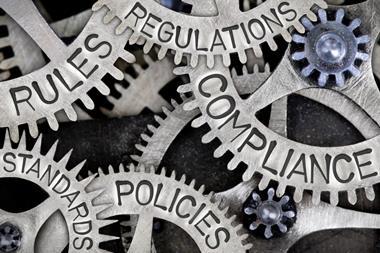Sue Copeman reviews a new report on the management and avoidance of disputes
In the last decade, risk management has taken off as a discipline. Indeed, 78% of the organisations surveyed by law firm Nabarro for their report Controlling conflict had a risk management policy. And seemingly encouragingly, the number of commercial cases reaching the courts has plummeted over the same period. But delving further into the report shows that many organisations’ risk management functions are failing to tackle disputes effectively.
Disputes are estimated to cost UK companies around £33bn a year (source: CEDR estimates). And the cost is not limited to legal fees. Indeed the top concern, even ahead of the potential costs, is damage to reputation. This is possibly a backlash from recent corporate scandals with potential public health implications, says the report. Cases, such as the contaminated chocolate at confectionery firm Cadbury, have put reputational damage and its long-term associated costs to the forefront of many companies’ minds.
Nabarro says that the second biggest concern is the cost of potential damages. The level of damages at stake is often uncertain in the early stages of a dispute, and high profile cases with significant damages illustrate that this concern is valid. In addition, senior management are concerned about the legal fees they may incur if they are drawn into a long and complex dispute.
As the saying goes, ‘time is money’, and eight out of 10 respondents were worried about the time taken up by disputes. Although it is difficult to put a cost on the time commitment, disputes often prove a major distraction as the disclosure process drags on, says Nabarro. It is important to factor in management time when planning a new case, and to determine at what point a case might be worth settling.
Acrimonious disputes also clearly affect the morale of staff directly involved. However, the knock-on effect across the organisation, of negative publicity, damage to reputation and so on should not be underestimated, warns Nabarro.
Win or lose, organisations also face the threat of losing a valued customer or trusted supplier. This can have a significant financial impact on an organisation, affect relationships in the wider marketplace and cause further damage to reputation.
Last, but by no means least in Nabarro’s list of ‘big issues’ is senior executives’ personal liability. It is a growing concern, says the law firm. For example, criminal liability can now arise under the cartel offence in the Enterprise Act, and individuals may face the possibility of fines or imprisonment. Directors involved in anti-competitive conduct could be disqualified for up to 15 years.
Even where there is no legal liability, damage to personal standing is still a worry. As one respondent put it: ‘Senior management is more concerned about personal blame than legal liability.’
According to the research, 34% of disputes are with customers, 21% with employees, and 15% with suppliers. Disputes with regulators are also an emerging threat. The most common cause cited was poor communication. Next in descending order were ‘failure to deliver’, ‘poorly drafted contracts’, ‘lack of contract’ and ‘ineffective risk management procedures’.
“Risk policies were often not updated in light of lessons learnt from disputes
So, in a group of organisations where most have risk management policies in place, why were there mixed opinions about their effectiveness? For a start, only 12% had risk policies that covered dispute resolution in detail. Others had either no policy, or only covered dispute resolution superficially.
Risk policies were often not updated in light of lessons learnt, says the report, while, on average, staff understood less than half of risk management policies. Only 38% of organisations had programmes to educate staff on dispute avoidance.
This begs the question of how to improve risk management to avoid disputes? Nabarro comes up with some recommendations.
1 Make sure risk policies cover dispute resolution.
2 Make sure there is an effective feedback loop. There is a danger that the risk management policy becomes unresponsive to realities.
3 Involve external lawyers. Over two-thirds of respondents thought it would be a good idea for external lawyers to develop dispute resolution best practice for organisations and to provide training.
4 Improve understanding of risk management procedures through education and communication.
5 Make procedures easier to understand, using case studies and clearer language to embed the messages.
6 Carry out a contract audit. In view of the relatively high proportion of disputes being caused by the lack of written contracts or poorly drafted contracts, there is a clear need for companies to ensure contracts are properly documented and carry out contract audits to ensure they are clear and fit for purpose.
Postscript
Sue Copeman is editor, StrategicRISK. Copies of the full report can be obtained from Jonathan Warne, partner, Nabarro, j.warne@nabarro.com




















No comments yet